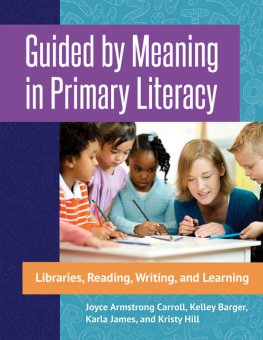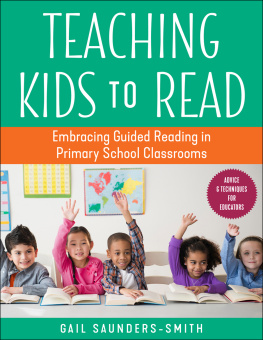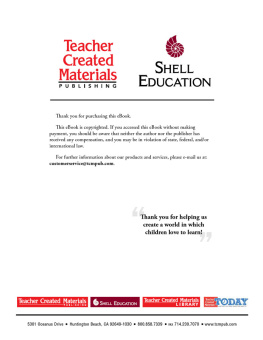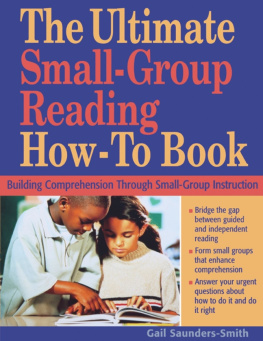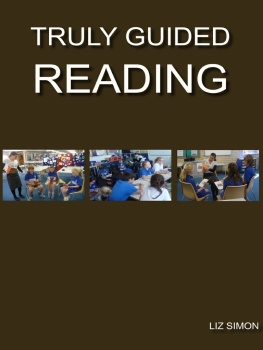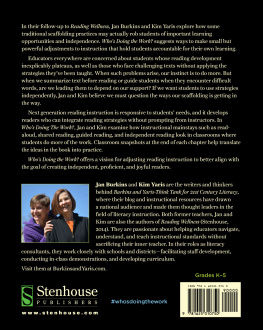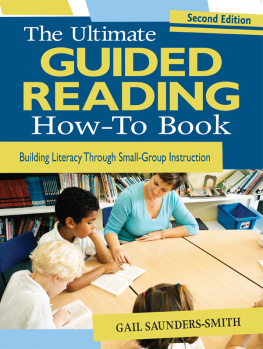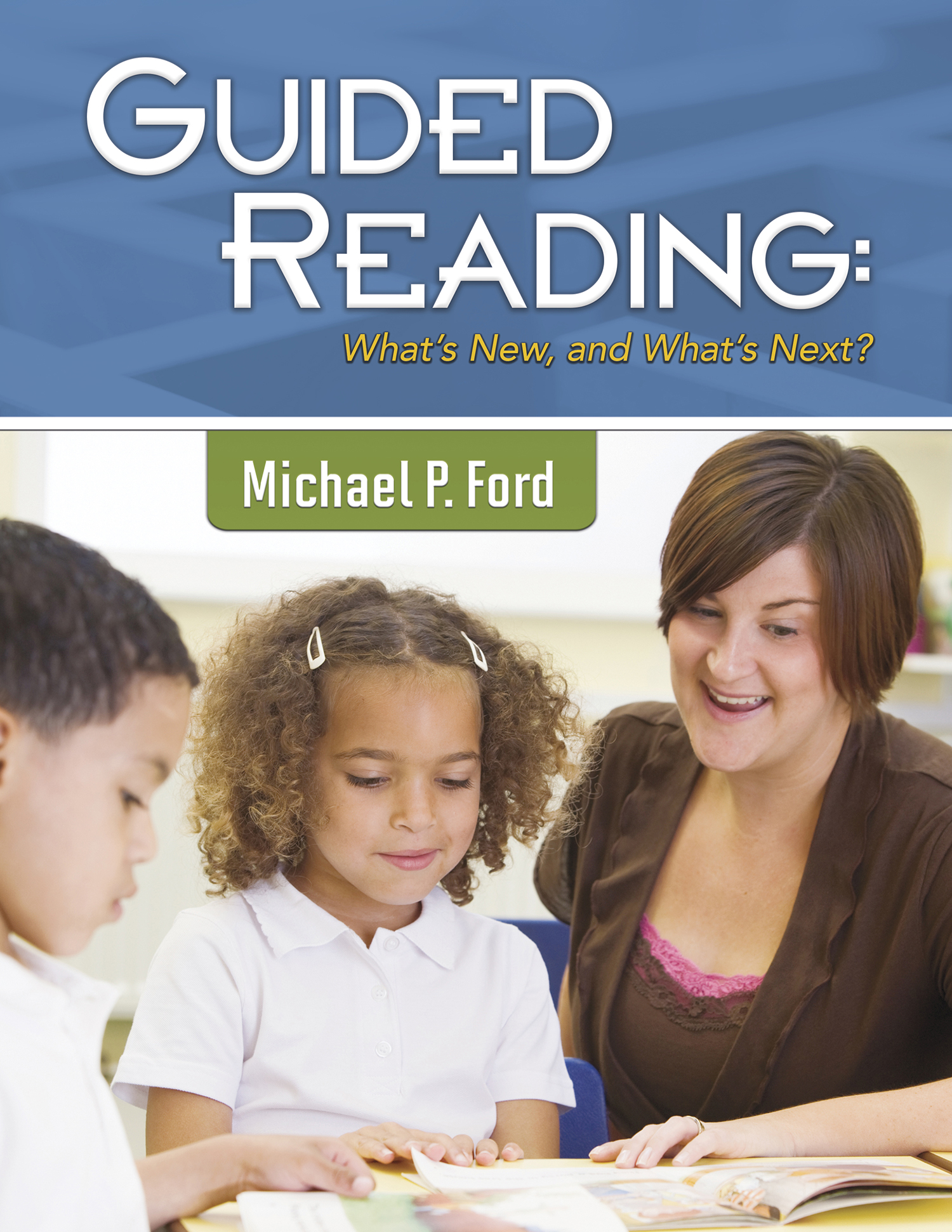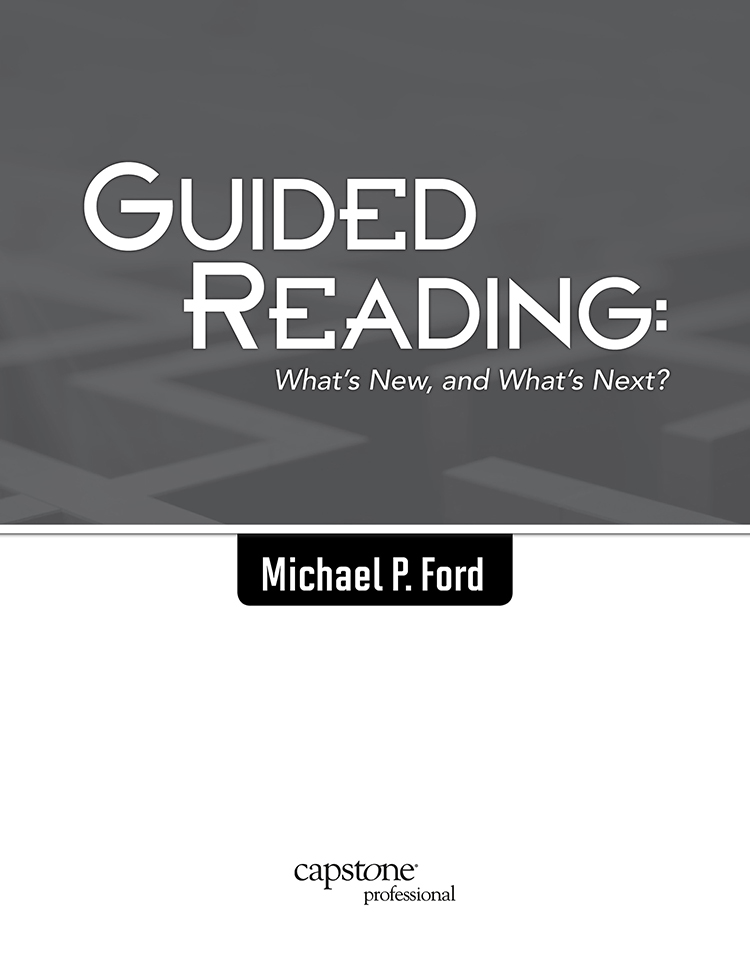DEDICATION
To Dr. Michael F. Opitz
There has been no better long-time collaborator, colleague, and friend.
ACKNOWLEDGMENTS
While this is my first book as sole author, I did not complete the project alone. I would like to acknowledge my attentive Capstone editor Karen Soll, who invited and embraced this project. I want to thank those whose previous collaborations influenced my thinking and writing in this book: Michael Opitz, Kathryn Glasswell, James Erekson, Joanne Caldwell, Mary Jo Fresch, Kathy Champeau, and Norm Andrews. My thinking on intervention was heavily influenced by the work of the Oshkosh Area School District, and I appreciate my colleague, K6 reading coordinator Deb Zarling, who first shared these resources. Thanks also to Tom Schiele whose invitation to present on the topic of guided reading caused the initial organization of my thinking on this topic and became the outline for this book. Finally, my thanks to Pat Scanlan for her never-ending support.
INTRODUCTION
The exciting romance with guided reading is well underway.
Fountas and Pinnell, 2012
During the summer of 2014, I was invited to present at a professional development conference in Las Vegas. The conference attracted more than 6,000 educators, and many joined a tract I presented for called I Teach First Grade. While I was asked to present on what I thought were three contemporary hot topics, such as helping students handle complex texts, integrating nonfiction in literacy programs, and using accessible assessments to document the progress of learners, a session I conducted entitled Guided Reading: Whats New? drew the largest number of educatorsalmost four times as many as the others.
It surprised me that so many educators were still interested in learning more about guided reading. In an era of constantly identifying whats hot and whats not, I thought guided reading had been pushed to the back burner. It seems to be the focus of minimal scholarly attention, but it still dominates literacy programs, especially primary classrooms. In fact, in these times of increasing demands from Response to Intervention (RtI) frameworks and college and career readiness standards, small group instruction including guided reading is now carrying the responsibility of providing interventions to accelerate the growth of all readers. Models of small group reading instruction seem particularly critical for readers who need our help the most.
While models of guided reading have existed for many decades, they re-emerged in 1996 with the popularity of Fountas and Pinnells text Guided Reading: Good First Teaching for All Children. Ranked first by relevance in a Google search on guided reading and cited more than 1,000 times, it is clear this is the most influential resource in shaping what we now know as guided reading. A number of how-to resource books emerged subsequently to support teachers. One of those was a text I co-authored with Michael F. Opitz (2001) called Reaching Readers: Flexible and Innovative Strategies for Guided Reading, written in part to expand the vision of guided reading and to encourage teachers to break out of an orthodoxy that had developed around the practice. Since that time, less has been written about guided reading. The Next Step in Guided Reading by Jan Richardson was published in 2009 and has been embraced by many educators looking for more direction. Preventing Misguided Reading by Burkins and Kroft has a more recent publication date (2010) and offers a more critical view of the practice. In their observations, they warned:
Misinterpreted instructional methods run the risk of abandonment. Education is littered with the remains of educational trends lost in translation. Often, the reality is that we compromised the fidelity of their implementation. So, critics assemble and declare that the approach doesnt work, as researchers and publishers line up to set a new program in place. We see this trend surfacing with guided reading, and we lament the energy and resources that districts may expend in totally revamping literacy instruction that may simply need adjusting (xv).
Perhaps the time does seem right to refocus some attention on improving small group instruction including guided reading within current literacy programs. When I prepared my presentation for the summer conference, I organized it around seven key guidelines to frame not only what was new in guided reading but, more important, what was working and what needed to be improved. The content was positively received by the audience and indicated to me an existing need to help educators look critically at this practice that has had almost two decades of implementation. So when Karen Soll from Capstone Professional approached me about doing a new book, I suggested looking at guided reading and thinking about how to position it for a more productive role in todays literacy programs.
That discussion led to this book. Although this teacher resource book is grounded in critical theory, research, and issues, I focus primarily on practical ideas to improve small group instruction, including guided reading within literacy programs. It is framed around seven key questions, and each chapter answers each by presenting a discussion of the issues and illustrating practical ideas educators can implement within their literacy programs. Reproducible forms and support materials are also available to readers within the chapters and in the Appendices.
The seven key questions that frame each of the chapters are:
This chapter builds on research about the history of guided reading that Michael Opitz and I did for the chapter Guided Reading: Now and Then in Mary Jo Freschs book An Essential History of Current Reading Practices published in 2008 by the International Reading Association. A version of this chapter was also published as the article Looking Back to Move Forward with Guided Reading in the journal Reading Horizons in 2011. To look ahead, the chapter presents results from a national survey of guided reading practices Opitz and I conducted that was published in Literacy Research and Instruction in 2008 as an article called A National Survey of Guided Reading Practices: What We Can Learn from Primary Teachers.
When the conversation in the reading community shifts to new topics, or at least new ways of talking about old topics, it is important that we dont throw out the baby with the bathwater. In this chapter, I will provide the theory and research supporting the use of guided reading. It is important to be able to articulate why guided reading is still relevant in literacy programs. This chapter also includes suggestions for an assessment, which can be used as a baseline.
Often, guided reading is relied on to carry the responsibility of addressing all instructional needs for the students that it serves. Exclusively using or over relying on guided reading in this manner will result in an imbalanced comprehensive literacy program, and the instruction will fall short of what it needs to do. Guided reading needs to be supported by other aspects of the literacy program. This chapter discusses how to better align guided reading within a comprehensive literacy program.


